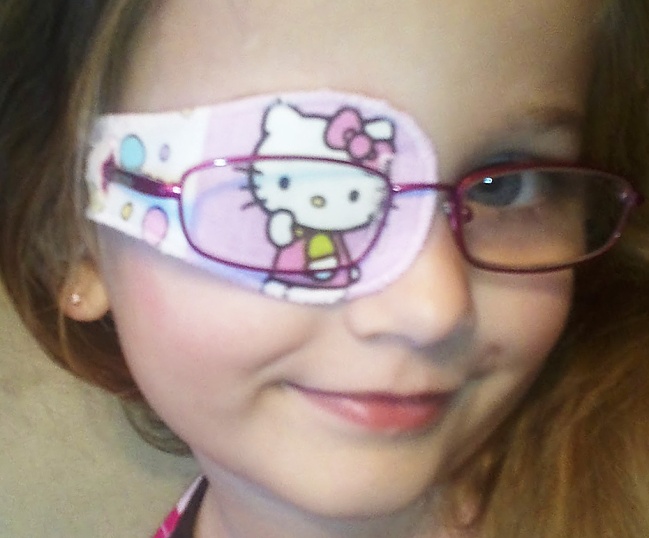The gold standard in the treatment of amblyopia is "early initiation of treatment as quickly as possible."
The gold standard in the treatment of amblyopia is "early initiation of treatment as quickly as possible." Any delay could cost the child's vision, while after the age of 7, improvement margins are narrowed dramatically.
In amblyopia the problem lies in the brain. The brain cells, which are associated with the amblyopic eye, do not receive useful visual stimuli and they gradually lose their functionality.
This damage is irreversible. Amblyopia coming from a deprivation of visual stimuli due to a dense congenital cataract tends to become permanent after the first few months of life. Surgical removal of the cataract, with the correction of refractive abnormalities that occurs, is the only treatment that the child needs to immediately begin using his eye.
In the cases of amblyopia due to heterometropia, because there was some visual function (even if impaired) there may be improvement by prescribing glasses or contact lenses even at ages higher than 7 years old and sometimes up to 12 years old. Although, this does not apply in cases of amblyopia due to strabismus, where even after surgical alignment of the eyes, the squinting eye’s vision does not seem to improve itself. Our goal in this case is to force the child to use more the amblyopic eye. The only way to achieve this is by covering or clouding the "good" eye.

Covering the healthy eye
The coverage of the healthy eye aims at forcing the child to use the weaker eye. It is the oldest practice for the treatment of amblyopia. Although some have suggested newer methods, trying to achieve the same result, the coverage is still considered the best and most effective treatment. The cover is initially applied «full-time», which means 24 hours a day or just at the hours the child is awake.
Although, some ophthalmologists prefer after a while the «part-time» coverage (only for a few hours a day) in order to reduce the possibility of amblyopia in the "good" eye due to deprivation of visual stimuli. We continue with the covering, until amblyopic the eye reaches the visual acuity of the healthy one, or when the improvement stops.
During that time, monitoring by an ophthalmologist should be regular and for infants it may be even every 3 days. In older children, the visits can be made at a frequency of one week for each year of the child’s life, which means every 2 weeks for a 2 year old, every month for a 4year old, etc. Children with strabismus, that treat amblyopia with coverage, may experience some degree of strabismus in the previously "good" eye. This may worry some parents, but essentially it is a positive element and means that the child is now able to use both eyes.
A common problem that parents face is keeping the cover on the child’s eye since young patients do not tolerate. Let’s not forget that we cover the child’s "good" eye, so it is reasonable for him to resent, due to now seeing with difficulty. Unfortunately there is no easy solution to this problem. Distracting the child with other activities, games, hugs etc. can help in the early days of coverage, which are the toughest. It is important to keep the cover in place at all costs, even if this means to prevent the child's hands to reach the eye and remove it. This can be achieved for example with "water wings" (children's life jackets) worn around the arms of the child.
Other problems that may occur include an irritation from the patch, which is treated by placing the cover on the child’s glasses or with special ointments. Children's stickers for amblyopia come in many colors and designs so it can be fun for the child. If the child has a favorite doll, we also place a similar sticker to the doll’s eye, which somewhat alleviates the psychological burden of the child, and considers the sticker as something normal.
Penalization
An alternative way of treating amblyopia, which apart from applying a cover, is the daily instillation of atropine drops in the healthy eye. Atropine causes cycloplegia (paralysis of the adjustment), resulting in blurred vision of the "good" eye and forced use of the one with amblyopia. This method refers to the international term «penalization», translated as "I bring in a disadvantage" and refers to the suppression of the healthy eye, so that the weaker one is given the opportunity to grow.
 German
German Ελληνικά
Ελληνικά